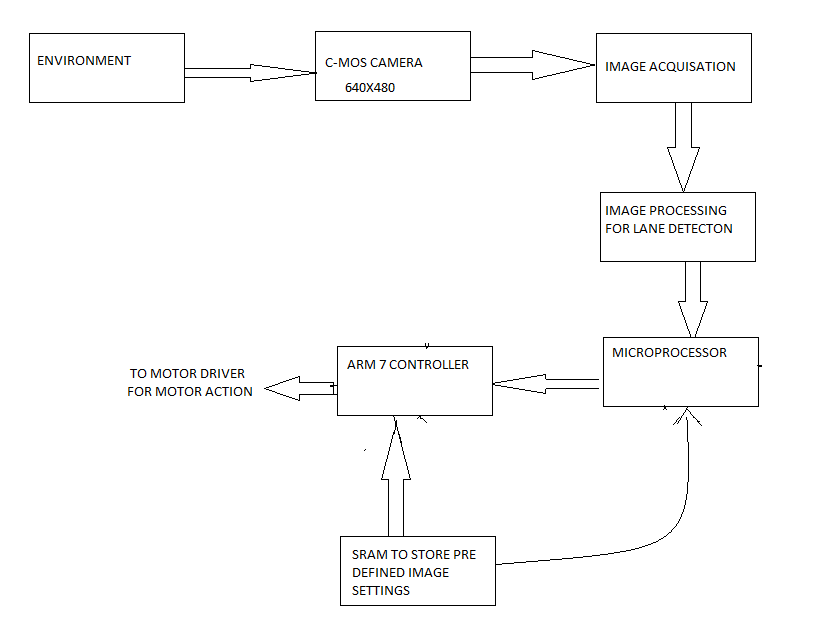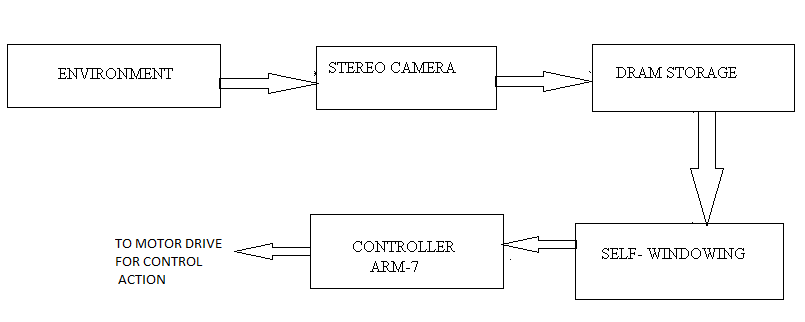The following algorithm for robotic project report & documentation describes the sequence of operation for both lane detection and obstacle avoidance using Image Processing Analysis.
For Lane Detection:
STEP 1: Initialize the camera.
STEP 2: Take the different orientation of the given lane and pre-process the image and store it in the SRAM.
STEP 3: Now allow the camera to traverse the lane.
STEP 4: Take the snap of the lane and check with the data base.
STEP 5: Perform the controller action.
STEP 6: Repeat the process till the destination is reached.
For Obstacle Avoidance:
STEP 1: Initialize the camera.
STEP 2: Observe the environment.
STEP 3: Store that in DRAM.
STEP 4: Do self windowing technique and determine the least pixel rate by using the analysis.
STEP 5: Allow the controller to take the action.
STEP 6: Repeat the process till the destination is reached.


